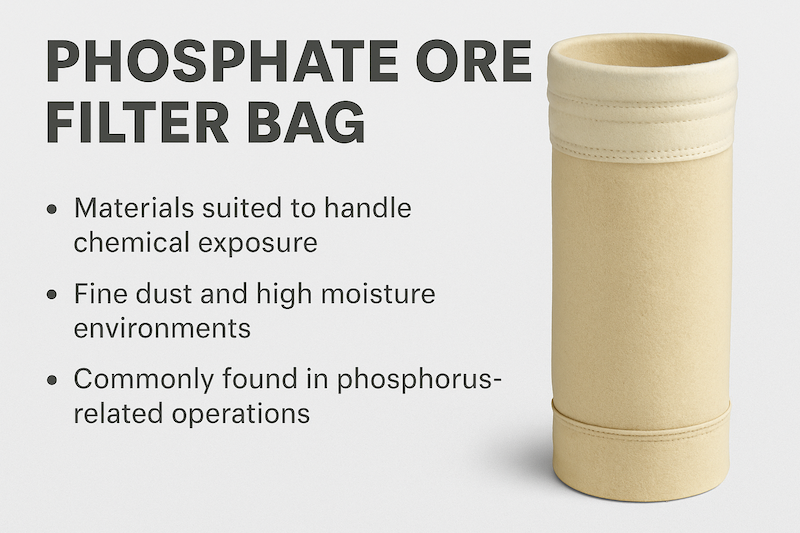Dust generated from phosphate ore processing contains fine particles with high moisture and corrosive properties. These conditions pose specific filtration challenges, especially in high-temperature or chemically reactive environments.
| Process Step | Dust Characteristics | Recommended Filter Media |
|---|---|---|
| Ore Crushing | Fine phosphate dust, high air velocity | PPS, Aramid |
| Screening Systems | Lightweight dust, constant dispersion | PTFE-laminated Aramid |
| Kiln / Calcining | High temperature, corrosive gas presence | PPS, Fiberglass with ePTFE |
| Acid Reaction Line | High moisture, acid mist, chemical attack | 100% PTFE needle felt |

Besides standard sizes, filter bags can be fully customized:
| Filter Media | Continuous Temp (°C) | Acid Resistance | Alkali Resistance | Air Permeability (m³/m²·min) |
|---|---|---|---|---|
| PPS Needle Felt | 160 (190 peak) | Excellent | Moderate | 10–15 |
| Aramid + PTFE Laminate | 200 (220 peak) | Moderate | Moderate | 8–12 |
| Pure PTFE | 240 (260 peak) | Outstanding | Outstanding | 6–10 |
| Fiberglass Needle Felt | 250 (280 peak) | Moderate | Moderate | 10–14 |
In phosphate processing, filter bags typically experience rapid dust cake buildup. Cleaning cycles are commonly set between 5–10 minutes. Pulse pressure should stay around 0.4–0.5 MPa. Too high can damage the fabric; too low affects cleaning efficiency.
For acid mist environments, proper thermal insulation and dew point control of the dust collector housing is critical. Moisture accumulation accelerates bag degradation, especially with fiberglass or PTFE-based filters.
Understanding the Risk: Dust Explosion Fundamentals Dust explosions represent one of the most serious safety hazards in industrial
Introduction Efficient particulate collection is central to modern industrial air pollution control, making the baghouse a familia
By Omela Filtration — Industrial Filtration Experts 1. Industry Background and the Real Problem In pulse-jet dust collector syst